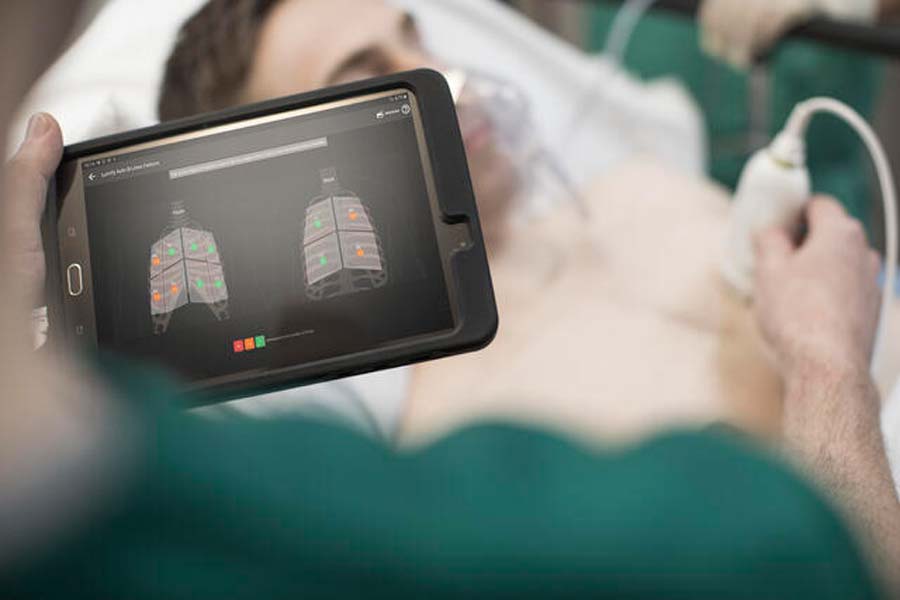2020 has been the year of COVID-19. The impact on the world has been enormous. The global COVID-19 pandemic has caused major problems for hospitals who have the need for quick, cheap and reliable detection of COVID-19. The current solutions are either time-consuming (PCR test) or do not scale enough (CT machines are expensive, use radiation and not mobile).
Lung ultrasound is an invaluable tool for the rapid diagnosis of suspected pneumonia or COVID-19 patients due to its ease of bedside use, low associated cost and reduced risk of infectious spread. Especially the ultra-portable Philips Lumify ultrasound product, which consist of a phone or tablet connected to an ultrasound probe. Main challenge with this approach is that an ultrasound specialist is required for determining the result. This dependency on a specialist can be significantly reduced if a reliable neural network could be created to automatically detect if a patient has Covid-19. Ideally, this network could also indicate the severity of the disease because this determines the patient’s treatment plan.
To solve this problem PRE is going to design CNN/ SNN for processing of ultrasound lung images. First, we will develop a classifier network for detection of healthy or unhealthy lungs (e.g. pneumonia or Covid-19) and then we will try to create a detection model, which could also indicate the severity of the damage to the lungs. Using the traditional CNN implementation would require very large CPU/GPU. Such a solution would consume too much power to be practical/implementable. Neuromorphic computing promises to solve this problem.
PRE, in collaboration with imec-NL and GML, will evaluate the potential of a SNN in processing ultrasound lung images to detect healthy and unhealthy lungs (e.g., pneumonia or Covid-19) and evaluate if the high accuracy and low power (< 5 Watt) can be achieved.

